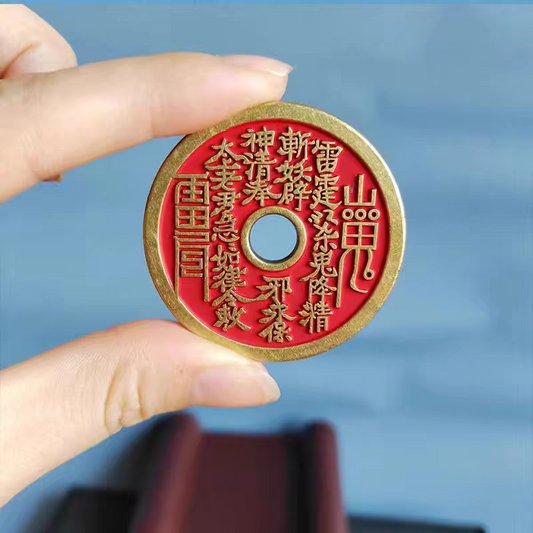
How is the meditation method of Taoism different from that of other religions?
paulpengShare
Taoist Meditation vs. World Religions: Unique Paths to Inner Peace – A Guide for the Curious Explorer
Introduction: The Quiet Revolution of Taoist Meditation
In a world filled with diverse spiritual practices, Taoist meditation stands out as a gentle dance between humanity and nature—a practice not of isolation, but of reconnection. Unlike religious meditations that often focus on devotion, sin, or transcendence, Taoist meditation is rooted in the philosophy of Tao (the natural way of the universe). Its goal? To harmonize the self with the rhythms of nature, fostering wu wei (effortless action) and tian ren he yi (unity of heaven and humanity). Let’s explore how this ancient art differs from meditative traditions in Buddhism, Christianity, Islam, and others—through accessible examples and relatable insights.
1. Purpose: Harmony, Not Salvation
Most religious meditations seek spiritual purification, enlightenment, or closeness to a deity:
- Buddhism: Aims to escape suffering (dukkha) through mindfulness of impermanence.
- Christianity: Involves prayer and devotion to align with God’s will.
- Islam: Practices zikr (remembrance of Allah) for spiritual elevation.
Taoism’s Twist: Taoist meditation is not about “fixing” the self or seeking salvation. Instead, it’s about rediscovering one’s innate harmony with nature. Think of it as tuning into a radio frequency—no need to change the music, just adjust the antenna.
- Example: The “Embracing the Tree” meditation (站桩) involves standing still, imagining roots merging with the earth. The goal? To feel your breath sync with the wind, your heartbeat with the soil—no mantras, no divine supplications, just presence.
2. Technique: Nature as Teacher
While many traditions use structured rituals (prayer beads, mantras, or visualizations), Taoist meditation often mirrors nature’s simplicity:
- Movement as Meditation: Taoist qigong (气功) and tai chi (太极) are “moving meditations.” Slow, fluid gestures mimic water (adaptable), trees (stable), and birds (free). It’s not exercise—it’s a dialogue with nature’s energy (qi).
- 无为 (Wu Wei) – Effortless Effort: Unlike Buddhist vipassana (mindfulness of breath) or Christian contemplative prayer (which require focused attention), Taoist practices embrace “effortless action.” For example, “Sitting in Stillness” (静坐) allows thoughts to flow like a river—no judgment, just observation.
Key Difference: Taoist meditation rejects rigid discipline. It’s about attunement, not control. As the Tao Te Ching says: “The best meditation is like water—yielding, yet powerful.”
3. Relationship with the Divine: No Separation
Many religions posit a divide between the human and the divine:
- Christianity: God is a separate, almighty being.
- Islam: Allah is transcendent, distinct from creation.
- Buddhism: The divine is an abstract concept (nirvana).
Taoism’s Belief: The divine is in nature, not above it. Taoist meditators don’t “pray to” gods—they embody divine principles.
- Example: The “Three Treasures” meditation focuses on cultivating compassion (慈), frugality (俭), and humility (谦)—qualities seen in nature (e.g., a tree nourishing others without expectation).
- Symbolism: The yin-yang symbol in meditation represents balance, not duality. There’s no “sin” to overcome—only disharmony to resolve.
4. The Body: A Microcosm of the Universe
Taoist meditation treats the body as a sacred ecosystem, not a vessel to transcend:
- Energy Channels (Meridians): Practices like “Small Heavenly Circuit” (小周天) visualize qi flowing through meridians, mirroring the moon’s orbit. It’s a bodily reflection of cosmic cycles.
- Embodied Spirituality: Unlike ascetic traditions (e.g., Christian fasting or Buddhist monasticism), Taoism honors the body. Even diet (dao yin 导引) is a meditation—eating seasonal foods to align with nature’s rhythms.
Contrast: Buddhist monks may meditate for hours in stillness; Taoist practitioners might meditate while gardening, feeling the soil’s texture as a form of prayer.
5. Ritual vs. Spontaneity
Many religions rely on fixed rituals:
- Islam: Five daily prayers (salat) at specific times.
- Hinduism: Mandatory fire rituals (yajna).
Taoism’s Approach: Rituals exist (e.g., ancestor veneration), but meditation thrives in spontaneity. A Taoist might meditate:
- While watching clouds (“Cloud Gazing” – 观云), observing impermanence.
- While walking a mountain path (“Treading the Tao” – 踏道), feeling each step as a connection to the earth.
Philosophy: “The Tao that can be named is not the eternal Tao” (Tao Te Ching). True meditation is beyond rules—it’s a felt experience.
Case Study: Taoist Meditation vs. Buddhist Mindfulness
Let’s compare two popular Eastern practices:
| Aspect | Taoist Meditation | Buddhist Mindfulness |
|---|---|---|
| Goal | Harmony with nature | Liberation from suffering |
| Focus | External (nature, qi) + internal | Internal (thoughts, sensations) |
| Movement | Embraced (qigong, tai chi) | Typically still (sitting meditation) |
| Divine Concept | Immanent (in nature) | Transcendent (nirvana) |
| Symbolism | Nature motifs (cranes, mountains) | Religious symbols (lotus, Buddha) |

Example: A Taoist meditating in a forest might focus on the sound of a stream as “Tao’s voice,” while a Buddhist might observe the sound as anicca (impermanent), cultivating detachment.
Why Taoist Meditation Resonates Today
In a world of stress and disconnect, Taoist meditation offers a refreshing approach:

- Eco-Spirituality: Its focus on nature aligns with modern environmentalism. Meditating outdoors isn’t just “nice”—it’s a spiritual duty.
- Anti-Perfectionism: No need for “correct” posture or lengthy sessions. A 5-minute walk in the park can be a meditation.
- Holistic Health: Studies link qigong to reduced stress and improved immunity—making it appealing to wellness seekers.
How to Try Taoist Meditation (For Beginners)
-
“Tree Standing” (站桩):
- Stand with feet shoulder-width apart, knees slightly bent.
- Imagine roots growing from your feet into the earth.
- Breathe deeply, feeling the earth’s support. Duration: 5–10 minutes.
-
“Cloud Watching” (观云):
- Lie down, watch clouds move.
- Notice how they change shape—no judgment, just observation.
- Ask: “What can clouds teach me about flexibility?”
-
“Qi Ball” (气团):
- Hold your hands 12 inches apart, palms facing each other.
- Imagine a ball of energy between them—softly push and pull.
- Feel the “energy” expand and contract. Purpose: Awaken body awareness.

Conclusion: Meditation as a Love Letter to the World
Taoist meditation is not a solo journey—it’s a duet with the cosmos. While other religions may see meditation as a path to heaven, Taoism sees it as a way to awaken to the heaven already present in a dewdrop, a breeze, or a heartbeat. As Taoist master Zhuangzi said: “Heaven and earth and I were born together, and all things and I are one.”
For the curious Western reader, Taoist meditation offers a radical idea: spirituality isn’t about escaping the world—it’s about falling in love with it. No dogma, no guilt, just the quiet magic of being here, now, with the Tao.












